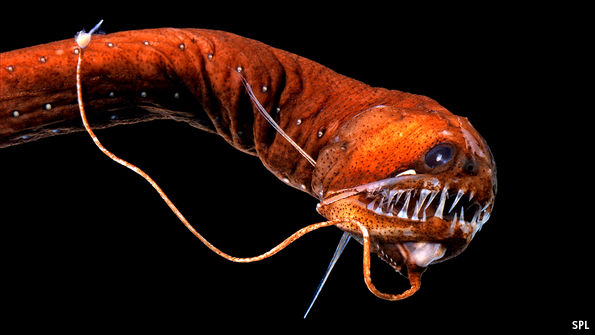The mesopelagic: Cinderella of the oceans

FEW have heard of the mesopelagic. It is a layer of the ocean, a few hundred metres below the surface, where little light penetrates, so algae do not live. But it is home to animals in abundance. There are bristlemouths: finger-sized fish with gaping maws that sport arrays of needle-like teeth. They number in the quadrillions, and may be the most numerous vertebrates on Earth. There are appendicularians: free-swimming relatives of sea-squirts a few millimetres across. They build gelatinous houses several times their body-size, to filter food from the water. There are dragonfish (pictured). They have luminescent spotlamps which project beams of red light that they can see, but their prey cannot. There are even squid and swordfish—creatures at least familiar from the fishmonger’s slab.
And soon there will be nets. Having pillaged shallower waters, the world’s fishing powers are looking to the mesopelagic as a new frontier. The UN’s Food and Agriculture Organisation reported in 2002 that the fish-meal and fish-oil industries would need to exploit this part of the ocean in order to feed fish farms. In the past nine months Norway has issued 46 new licences for vessels to fish…Continue reading
Source: Economist




